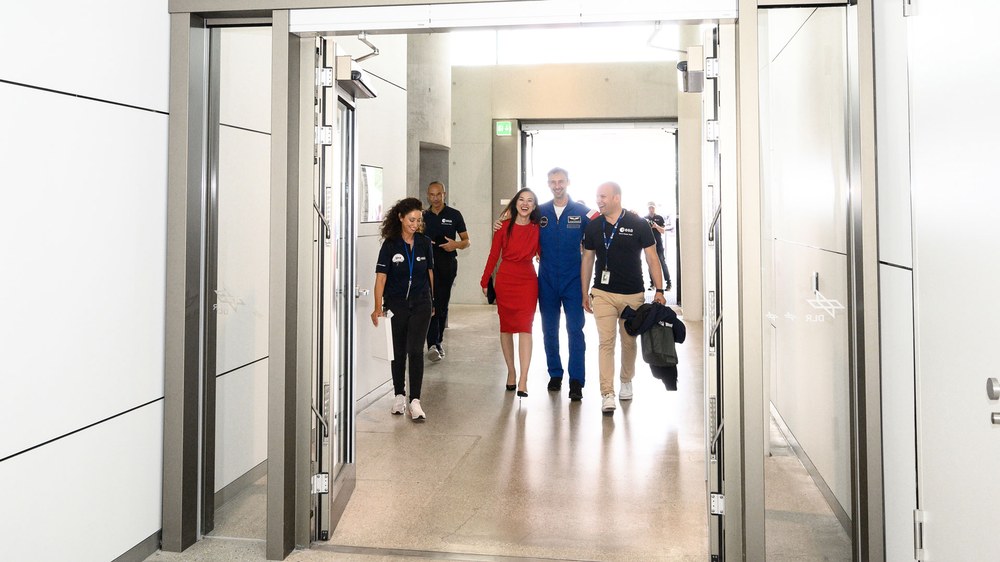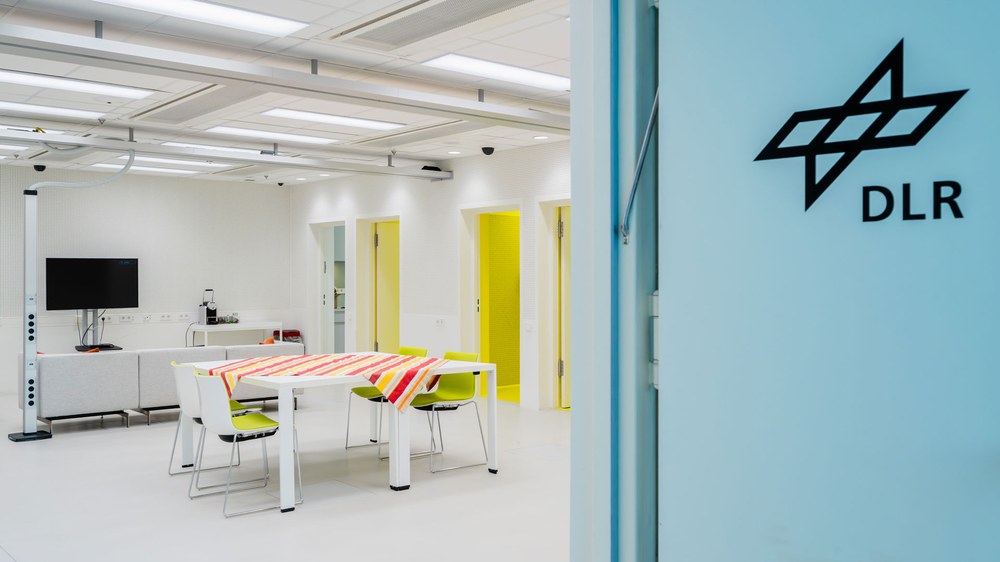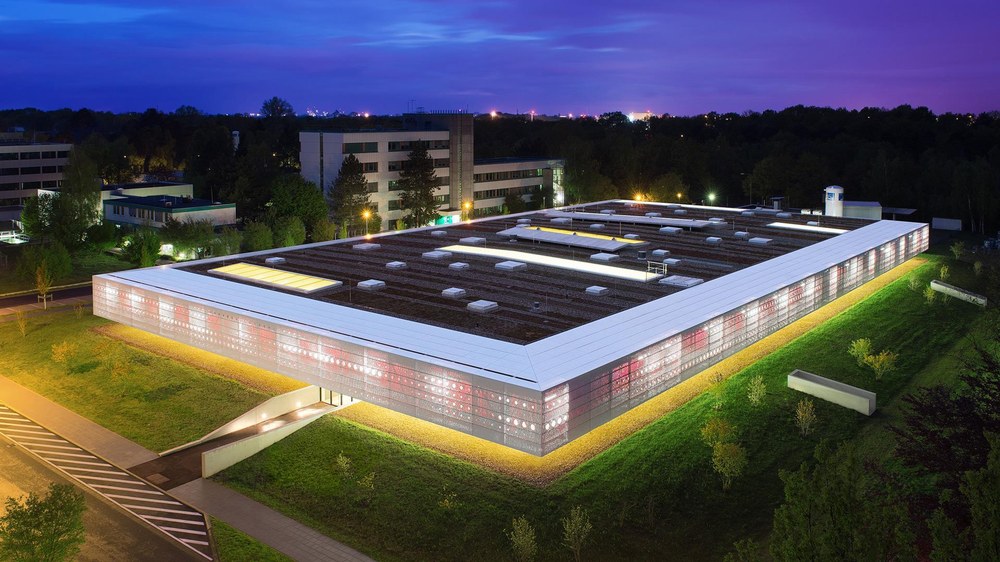From the ISS to :envihab in Cologne within days



- After returning from the ISS, medical tests begin immediately to study the effects of spaceflight.
- These findings also advance health research on Earth.
- European astronaut Sławosz Uznański-Wiśniewski has returned to Earth and is now staying at DLR's :envihab for several days.
- Focus: Human spaceflight, research in microgravity, international cooperation
Sławosz Uznański-Wiśniewski has returned to Earth after 18 days on the International Space Station ISS. Like most European astronauts, the Polish ESA project astronaut is spending his initial post-mission period at :envihab, the aerospace medicine facility of the German Aerospace Center (Deutsches Zentrum für Luft- und Raumfahrt; DLR) in Cologne, Germany. His schedule now consists of scientific tests and recovery. For researchers, this 'direct return' phase is crucial to investigating how the human body changes in microgravity. That's why examinations are carried out as soon as possible after landing and compared with data collected before launch. Important health data is also gathered to ensure returning astronauts are fit and healthy. For Uznański-Wiśniewski, this meant a tight schedule: undocking from the ISS on 14 July at 13:15 CEST, splashdown off the coast of California on 15 July at 11:31 CEST, a flight to Cologne and then arrival at :envihab at 12:19 CEST on 16 July. He is being supported at :envihab by DLR employees and a team from the European Space Agency (ESA).
"In :envihab we have a high-tech research facility, unique in Germany and Europe, where the DLR Institute of Aerospace Medicine carries out pioneering research and plays an essential role in supporting human space missions," explains Anke Kaysser-Pyzalla, Chair of the DLR Executive Board. "We also study the effects of extreme environmental conditions on the human body and potential countermeasures – all to prepare for future long-duration missions." Space presents extreme conditions for humans. In microgravity, muscles and bones deteriorate, fluids shift to the upper body, and the cardiovascular system becomes less active and loses efficiency. Compared to living on Earth, this physical decline happens on fast forward. "That's why this research is not only vital for astronauts to maintain their performance in space – it also benefits people on Earth," says Jens Jordan, Director of the DLR Institute of Aerospace Medicine.
"We have been working with the :envihab team for the past 10 years," explains Frank de Winne, ESA's LEO Services Group Leader. "Thanks to this high-tech research facility, we have been able to implement direct returns in Europe, handling the rehabilitation of European astronauts and finalising some of the experiments linked to their missions. This allows us to implement tailored protocols and ensure the long-term recovery of our astronauts."
Dosimeter worn at all times on the ISS
Sławosz Uznański-Wiśniewski launched to the Space Station on 25 June 2025 aboard a Dragon capsule from the United States. During his mission, he conducted a number of scientific experiments. He was part of the four-member Axiom Mission 4 (Ax-4) – the second ESA project astronaut to fly on a commercial human spaceflight mission. The engineer was originally selected by ESA in 2022 as a reserve astronaut. His Ax-4 mission was named 'Ignis', the Latin word for fire.
On behalf of ESA, the entire Axiom crew wore personal dosimeters from DLR throughout the mission to measure their exposure to space radiation. These are now being analysed by the DLR Institute of Aerospace Medicine. ESA will then record the results in the astronauts' medical files to help ensure radiation safety in space.
Post-mission tests focus on eye changes
Spaceflight often leads to changes in astronauts' eyes, but the causes for this are not yet fully understood. The DLR 'Retinal Diagnostics' experiment visualises and diagnoses the condition of the optic nerve in real time. Artificial intelligence assists in recording images and video of the human retina and optic nerve, using a small lens attached to a smartphone or tablet via an adapter. This approach works both in space and in remote areas on Earth for mobile emergency diagnostics. The device was also used during Ax-4, having been first employed by Matthias Maurer during his Cosmic Kiss mission.
During Uznański-Wiśniewski's direct return phase in :envihab, eye examinations are a priority and scientists are conducting several relevant tests. In addition, teams from :envihab and the European Astronaut Centre (EAC) will analyse blood and metabolic values, behaviour and cognitive performance, balance, bone health, the cardiovascular system, muscle condition and the immune system. The ESA astronaut is staying in :envihab's M5 module during this direct return. "Both the living quarters and the laboratories are equipped to offer ideal conditions for scientific and medical examinations of astronauts," says Edwin Mulder, DLR project lead for the scientific tests.
Related links
Direct return
Looking after European astronauts at :envihab directly after their landing is still relatively new. Alexander Gerst was the first ESA astronaut to return directly to Cologne, in November 2014. Before that, western European astronauts were examined by NASA in the United States or in Russia. Worldwide, astronauts' medical data is collected using standardised procedures to ensure comparability. The aim is to better understand the effects of microgravity on the human body and to develop suitable countermeasures.
A highly specialised medical and scientific team provides astronauts with round-the-clock care. After the Ax-4 mission, the team is carrying out examinations on behalf of ESA. Matthias Maurer also readjusted to Earth's conditions at :envihab after his 2022 mission. The last direct return study took place in 2024, when Swedish ESA project astronaut Markus Wandt came back from his Muninn mission.
